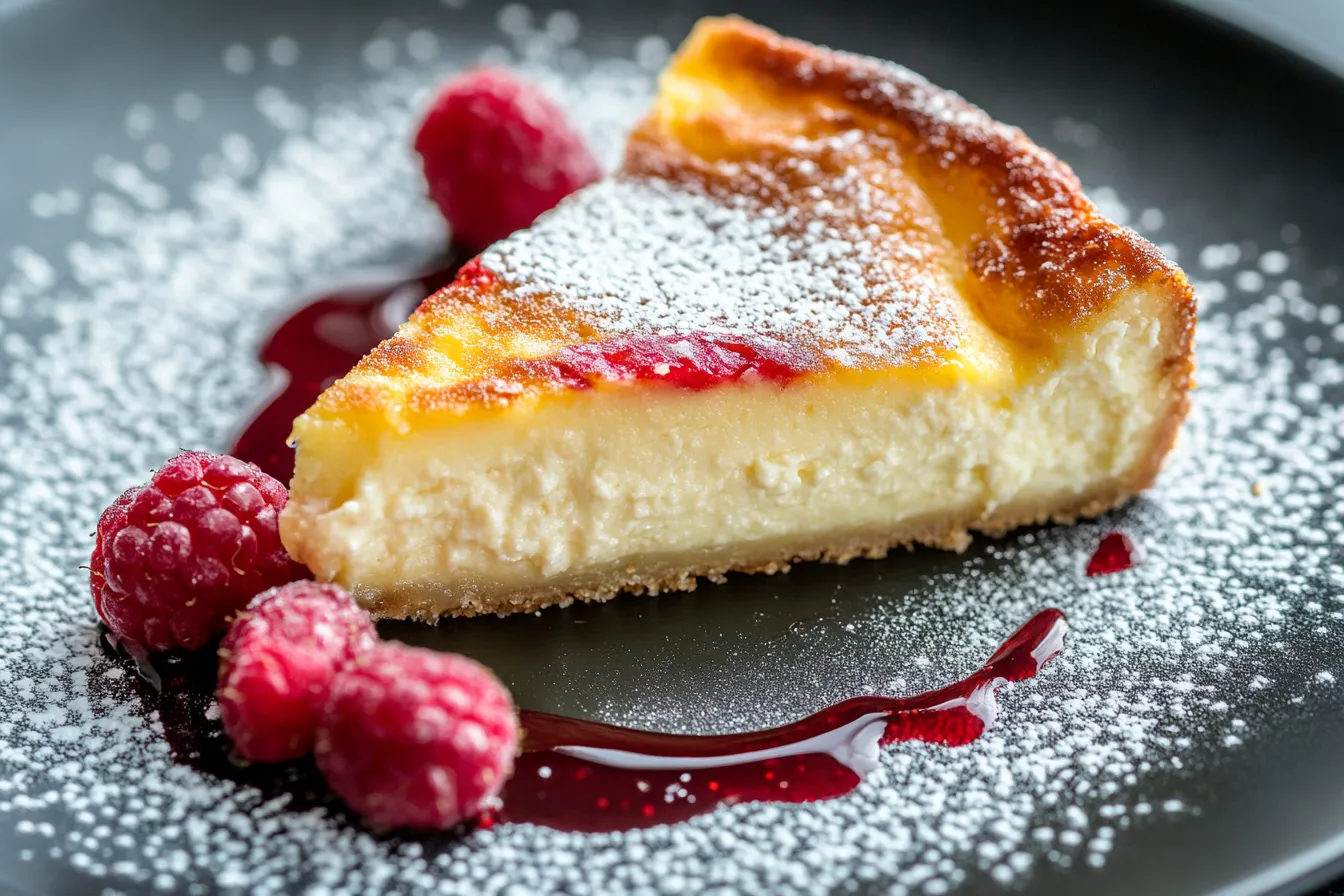Introduction
Tempura cheesecake is a stunning fusion of East and West—where the iconic American cheesecake meets the Japanese art of tempura frying. Imagine the crunchy, golden crisp of tempura giving way to the soft, creamy indulgence of cheesecake. This dessert is not only Instagram-worthy but a flavor bomb that’s winning hearts across gourmet kitchens, food trucks, and dessert cafes worldwide.
As culinary trends shift toward bold mashups and cross-cultural creations, tempura cheesecake has emerged as a dessert that captures attention with every crackling bite. This article explores everything you need to know about this rising star—from its unique texture and flavor profile to how you can make it at home and what makes it a favorite on foodie blogs..Recipes for Goumi Berry Pie
Whether you’re a home chef, a food blogger, or just someone with a sweet tooth, this article will break down the origins, preparation techniques, variations, and viral appeal of this modern masterpiece.
Before we get to the recipe and FAQs, let’s look at how this dessert came to life.
What Is Tempura Cheesecake?
Tempura cheesecake is an indulgent dessert that combines the art of Japanese tempura frying with the rich, velvety sweetness of Western-style cheesecake. It’s not your everyday slice of cake; it’s an experience. By encasing cheesecake in a crispy, golden shell, tempura cheesecake delivers the perfect contrast—hot and crispy on the outside, cold and creamy on the inside.
The preparation begins with frozen cheesecake pieces, dipped in a cold tempura batter and deep-fried quickly to preserve the creamy core. This results in a unique dessert that delights both the eyes and taste buds.
Definition and Core Components
At its core, tempura cheesecake includes three simple but carefully managed components:
- Cheesecake – Typically New York-style or Japanese cotton cheesecake, cut into firm chunks and frozen.
- Tempura Batter – Made from flour, cornstarch, egg, baking powder, and ice-cold water or soda water, the batter must remain lumpy and cold to ensure the iconic crispy texture.
- Oil for Frying – High smoke-point oils like canola or vegetable oil are ideal for ensuring the tempura crust cooks evenly without absorbing excess grease.
The cheesecake must be frozen solid to prevent melting during frying. When executed properly, the tempura crust lightly hugs the cheesecake, creating a warm outer shell that gives way to a cool, luscious filling..High Protein Pistachio Cottage Cheese Cheesecake
Visual and Textural Experience
The first thing you notice about tempura cheesecake is its presentation: golden-brown, crispy on the outside, and often dusted with powdered sugar or drizzled with chocolate or berry sauce. When sliced or bitten into, the inner cheesecake is still chilled or just slightly softened, creating an irresistible texture combo.
Texture Breakdown:
- Outer Layer: Crispy, slightly flaky, and golden.
- Middle Layer: Slightly warm and softened cheesecake.
- Center Core: Chilled, creamy, dense cheesecake.
This trio of textures—crispy, creamy, and cold—gives the dessert its trademark appeal and makes it perfect for Instagram-worthy food shots.
Flavor Profile:
- Sweet, but not overwhelmingly so.
- Slight saltiness from the batter balances the richness of the cheese.
- Complements both sweet sauces (like caramel, chocolate) and tart garnishes (like raspberry or passion fruit).
For foodies and dessert lovers alike, tempura cheesecake isn’t just a treat—it’s an event on a plate. Whether you find it at a trendy café or make it at home, it’s the kind of dessert that leaves a lasting impression.
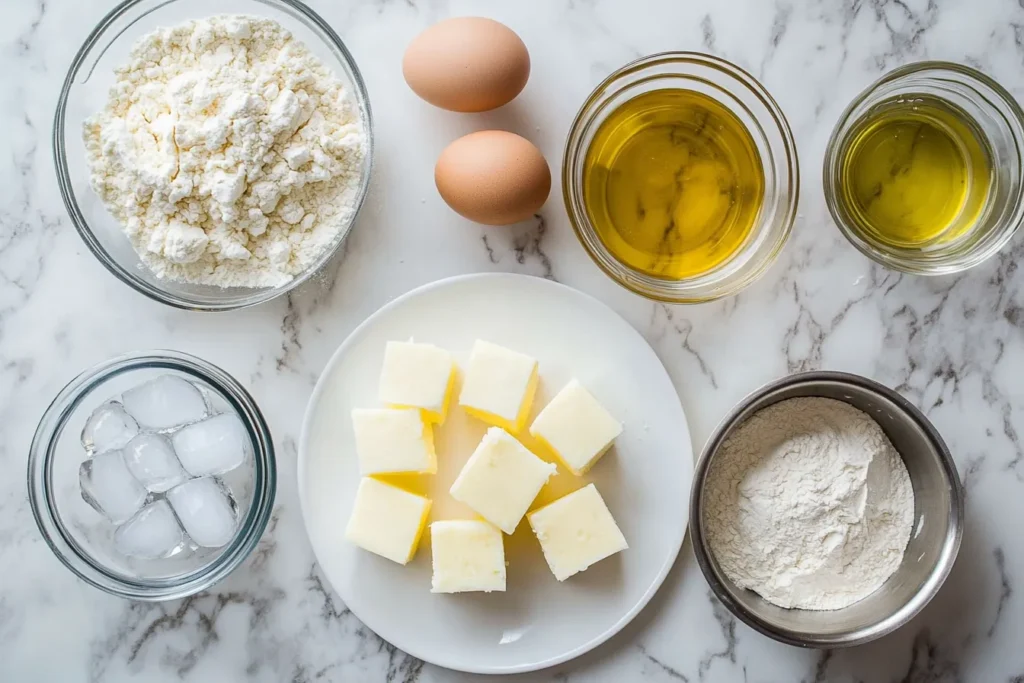
The Origins of Tempura Cheesecake
Tempura cheesecake may seem like a modern invention made for Instagram fame, but its roots lie in centuries-old culinary traditions. By examining how both tempura and cheesecake evolved in their respective cultures, we gain a richer understanding of how their fusion became not just possible—but inevitable in today’s adventurous food scene.
History of Tempura in Japan
Tempura, despite being deeply associated with Japanese cuisine, actually traces its origins to Portuguese missionaries in the 16th century. Introduced during the Nanban trade period, the technique of battering and frying foods came from “peixinhos da horta,” a Portuguese dish consisting of green beans dipped in flour and deep-fried.
The Japanese adapted this concept, refining it into the light and crispy batter now synonymous with tempura. Key innovations included:
- Using ice-cold water for a delicate, crunchy crust
- Frying vegetables and seafood quickly in hot oil
- Avoiding over-mixing the batter to prevent gluten development
Over time, tempura evolved from a street food in Edo-period Japan to a refined delicacy served in high-end restaurants. Its crispiness, minimal oil retention, and aesthetic appeal make it a uniquely Japanese contribution to the world of fried foods..Cottage Cheese Cheesecake
Cheesecake’s Journey from West to East
On the other side of the globe, cheesecake has a much older history. Originating in Ancient Greece, cheesecake was offered to athletes during the first Olympic games. The modern, creamy versions we enjoy today were developed in the 19th and 20th centuries, especially in the United States with the advent of cream cheese.
Japanese exposure to cheesecake began in the mid-20th century, when Western baking techniques were introduced post-WWII. By the 1960s, Japanese bakers began experimenting, eventually creating their own version: Japanese cotton cheesecake—a lighter, less sweet variation with a soufflé-like texture.
This dessert became a national favorite and started the trend of localized Western desserts in Japan.
Fusion Cuisine Trends That Birthed the Dessert
Fusion cuisine has long been a hallmark of culinary innovation. As global travel, social media, and multicultural kitchens expanded, so did the possibilities for food mashups. In the 2000s, chefs in Japanese and Asian fusion restaurants began deep-frying sweets as a novelty.
Tempura cheesecake likely began as a fun experiment in sushi bars and modern izakayas in the U.S. and Japan. Customers were drawn to:
- The surprise factor of hot-and-cold dessert bites
- The crunchy texture pairing with creamy cheesecake
- The ability to top or drizzle with various sauces
The dish quickly gained popularity on social media and food blogs, becoming a go-to for foodies looking for unique dessert experiences. It remains a staple in many Japanese-American and Asian-fusion establishments, and its popularity continues to grow in the home-cooking space.
From a centuries-old frying method to a Western classic turned Japanese favorite, tempura cheesecake is a perfect example of how culinary cultures collide in delicious ways.
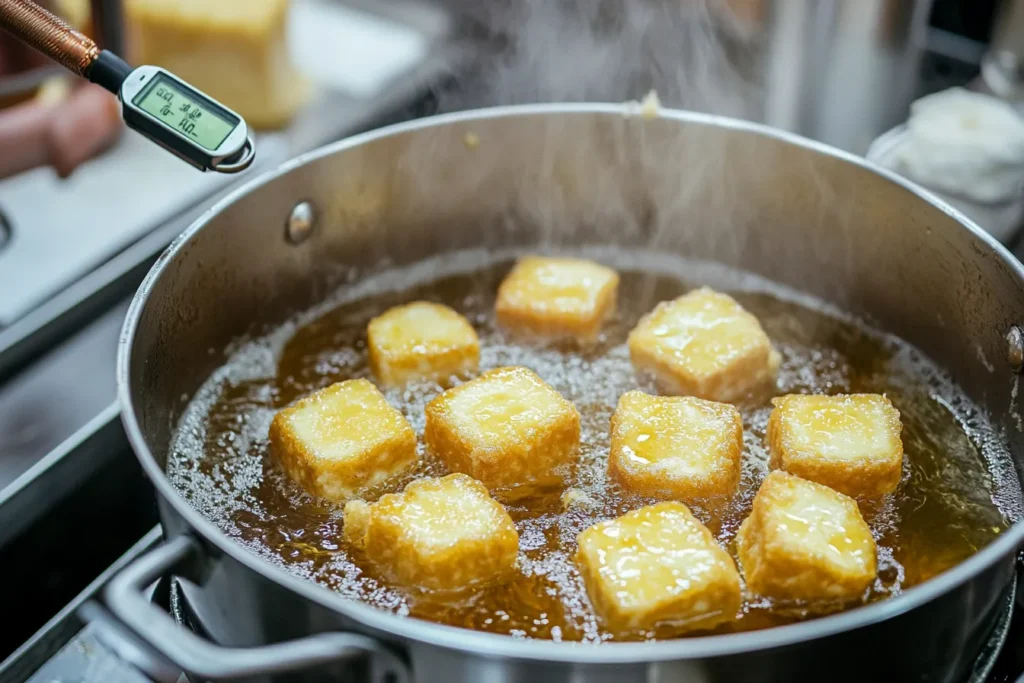
Ingredients and Tools You’ll Need
Before you attempt to make tempura cheesecake, you need to gather the right ingredients and tools. The secret to this dish lies not only in the flavor of the cheesecake but also in the integrity of the batter and frying technique.
Key Cheesecake Types to Use
Choosing the right type of cheesecake is essential. Since it will be frozen and fried, you want a cheesecake that holds its shape well and has a rich, creamy consistency.
Best options:
- New York-style cheesecake: Dense, rich, and perfect for frying.
- Japanese cotton cheesecake: Lighter and fluffier but still holds up when frozen.
- Store-bought cheesecake: Convenient and consistent in texture, just ensure it’s not too soft.
Tips:
- Cut into 1–2 inch cubes for best results.
- Freeze the pieces for at least 2 hours, ideally overnight.
Making the Perfect Tempura Batter
The magic of tempura lies in the batter. It must be cold, barely mixed, and used immediately after preparation. Here’s how to get it just right.
Classic Tempura Batter Recipe:
- ½ cup all-purpose flour
- ¼ cup cornstarch or rice flour (adds crispiness)
- ½ tsp baking powder
- 1 large egg (cold)
- ¾ cup ice-cold water or soda water
Optional:
- A pinch of sugar for slightly sweet batter
- Vanilla extract for a subtle dessert aroma
Preparation:
- Mix dry ingredients in one bowl.
- Beat egg in a separate bowl, then add ice water.
- Combine the wet and dry ingredients quickly. Do not overmix—a few lumps are okay.
- Use immediately. If batter gets warm, place the bowl over an ice bath.
The colder your batter, the crispier your crust will be.
Tools for Deep Frying at Home
Frying at home may seem intimidating, but with the right equipment, it’s simple and safe.
Essential tools:
- Deep fryer or deep saucepan: A heavy-bottomed pan like a Dutch oven retains heat best.
- Thermometer: Oil temperature should stay between 340–360°F (170–180°C).
- Slotted spoon or spider strainer: To remove cheesecake pieces safely.
- Paper towels and cooling rack: For draining excess oil.
- Tongs or chopsticks: For gentle turning while frying.
Oil types to use:
- Canola oil
- Vegetable oil
- Sunflower oil
- Peanut oil (adds slight nutty flavor)
Avoid olive oil due to its low smoke point.
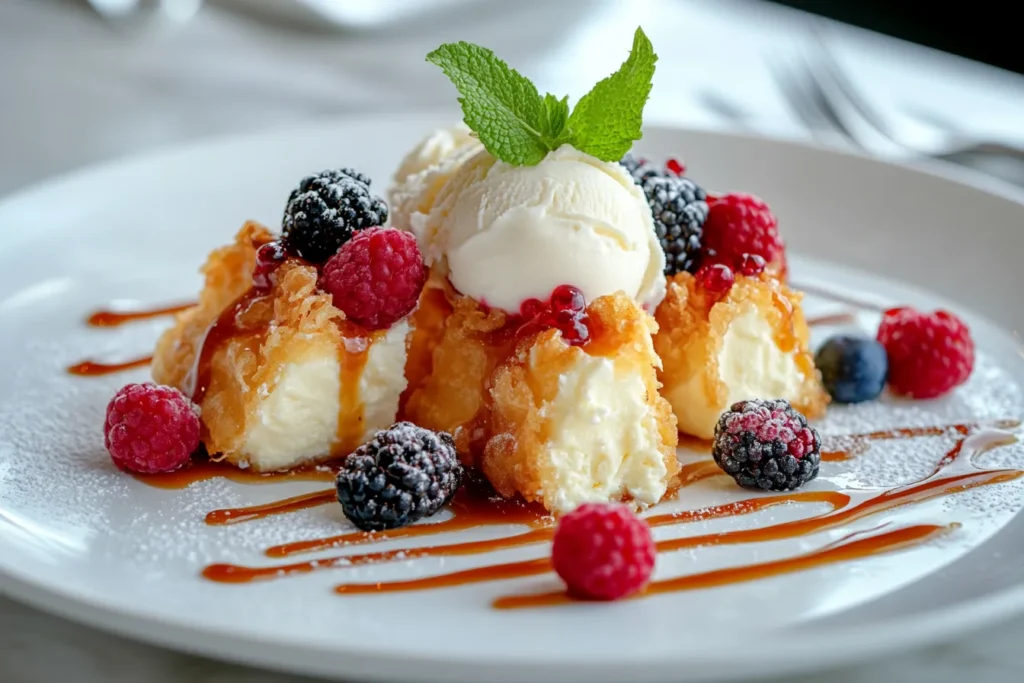
Step-by-Step Recipe for Tempura Cheesecake
Now that you’re equipped with the ingredients and tools, it’s time to bring this indulgent dessert to life. This step-by-step guide ensures your tempura cheesecake is golden, crispy, and irresistibly creamy inside.
Freezing and Cutting the Cheesecake
- Start with chilled cheesecake
Whether store-bought or homemade, refrigerate the cheesecake for a few hours so it’s firm and easier to slice. - Cut into cubes
Use a sharp knife dipped in warm water to slice the cake into 1–2 inch cubes. Wipe the blade clean between cuts. - Freeze solid
Arrange the cubes on a parchment-lined tray and freeze for at least 2 hours, preferably overnight. This prevents the filling from leaking during frying.
Mixing the Batter and Frying Tips
- Prepare batter just before frying
Cold is key. Mix the batter as instructed earlier—remember, lumpy and cold is better than smooth and warm. - Heat the oil
Fill your pot with at least 2–3 inches of oil and heat to 350°F (175°C). Use a thermometer to monitor the temperature. - Coat the cheesecake
Dip each frozen cheesecake cube into the batter. Ensure it’s fully coated, allowing excess batter to drip off. - Fry in small batches
Carefully lower the battered cheesecake into the oil. Fry for about 1–2 minutes until golden brown, turning once for even coloring. - Drain and cool
Remove with a slotted spoon and place on paper towels or a wire rack. Let cool slightly before serving.
Pro Tips:
- Do not overcrowd the pan, or oil temperature will drop.
- Use a mesh strainer to remove stray batter bits between batches.
Garnishing and Serving Ideas
Now that you’ve nailed the frying process, it’s time to make the dessert shine.
Toppings and Sauces:
- Powdered sugar – a classic dusting
- Chocolate or caramel drizzle – rich contrast
- Raspberry or strawberry coulis – adds tartness and color
- Matcha glaze – for a Japanese twist
- Honey and crushed nuts – for texture and aroma
Pair with:
- A scoop of vanilla or green tea ice cream
- Fresh fruits like mango, blueberries, or pomegranate seeds
- Whipped cream for a light and airy side
Plating Ideas:
- Use slate or black plates to contrast with the golden crust
- Add edible flowers or mint leaves for a pop of color
- Serve on skewers for a fun, tapas-style presentation
With each bite offering a symphony of textures and flavors, tempura cheesecake is more than just a dessert—it’s a centerpiece. It turns casual dinners into celebrations and elevates your dessert table with minimal effort.
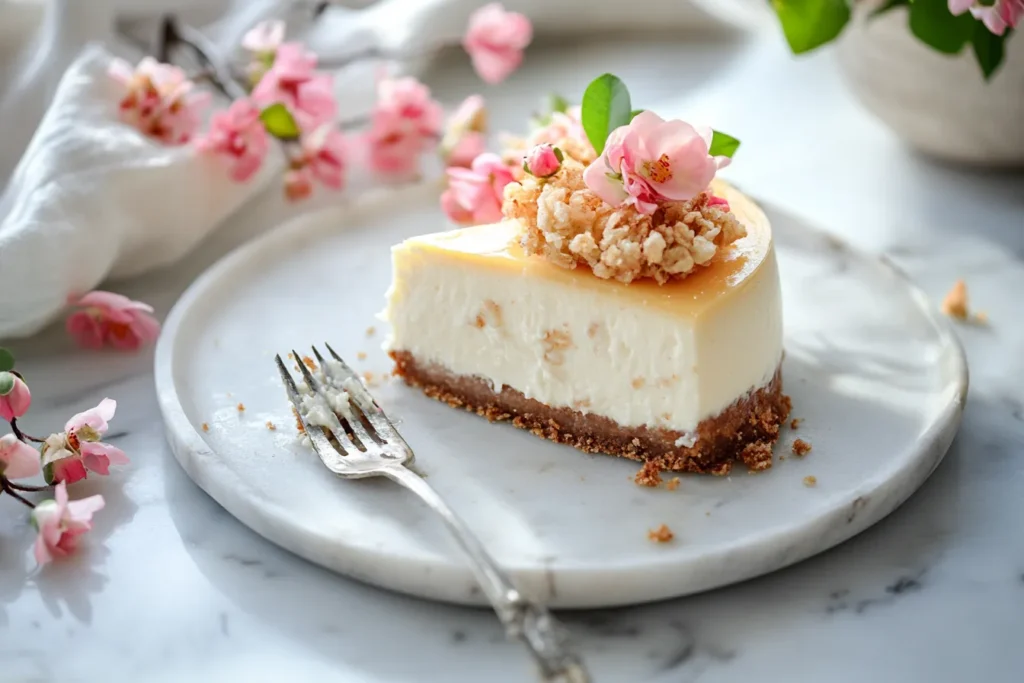
Frequently Asked Questions
Can I use store-bought cheesecake?
Yes! Store-bought cheesecake works perfectly, especially if it’s firm and dense. Freeze it solid before battering and frying to maintain shape and prevent melting.
How do I keep it from falling apart in oil?
Ensure the cheesecake is fully frozen and the batter is thick enough to form a protective coating. Fry in hot oil (350°F / 175°C) to quickly crisp the outer shell and avoid sogginess.
Can I bake instead of frying it?
Baking won’t yield the same crispy texture, but you can try air frying at 375°F (190°C) for 5–7 minutes. Brush with a little oil for better browning. The texture will be slightly softer.
What oils are best for frying?
Use oils with high smoke points like canola, vegetable, sunflower, or peanut oil. Avoid olive oil as it burns easily and adds a strong flavor not suited for desserts.
How long can I store leftovers?
Tempura cheesecake is best served fresh. However, you can refrigerate leftovers for up to 2 days. Reheat in the oven or air fryer to bring back some crispiness.
What sauces go best with it?
Popular options include:
- Chocolate or caramel sauce
- Raspberry, strawberry, or mango compote
- Matcha glaze
- Honey or maple syrup
Each brings its own twist, balancing sweetness, tartness, or depth.
Conclusion
Tempura cheesecake is a triumph of culinary creativity. It’s an East-meets-West dessert that not only tastes fantastic but also captivates the senses. From its crackling golden shell to its cool, creamy heart, each bite offers a dynamic play of textures and temperatures.
Whether you’re trying it at a Japanese fusion restaurant or frying up a batch in your own kitchen, tempura cheesecake promises a dessert experience like no other. It’s versatile, trendy, photogenic, and absolutely unforgettable.
As the world of food continues to evolve through fusion and innovation, desserts like tempura cheesecake remind us that the best ideas often come from blending cultures, techniques, and a bit of culinary courage.
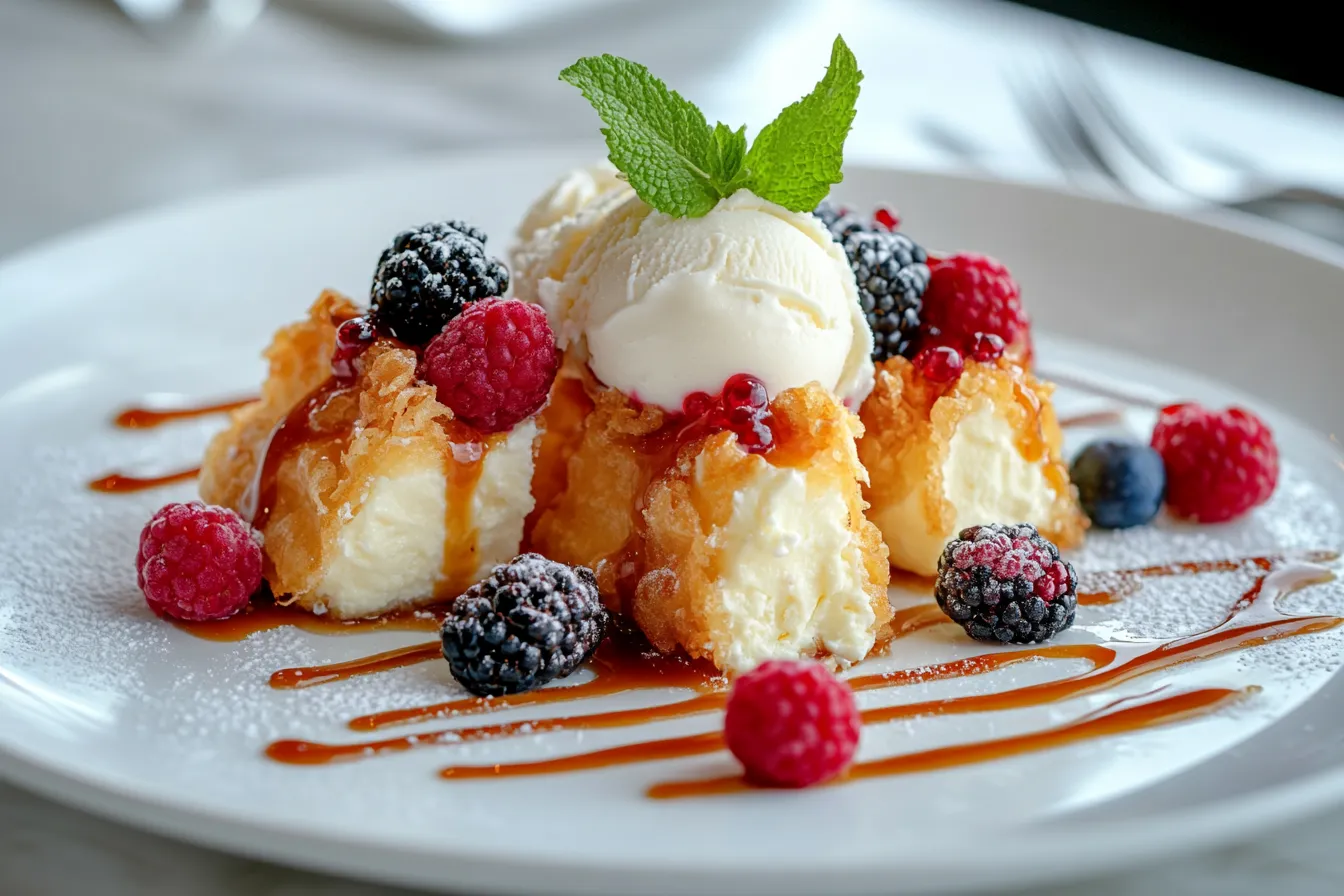
Name: Tempura Cheesecake
Ingredients
Equipment
Method
- Instructions:
- Freeze Cheesecake:
- Cut cheesecake into cubes and freeze solid for at least 2 hours or overnight.
- Prepare Tempura Batter:
- In a bowl, mix flour, cornstarch, and baking powder. In a separate bowl, whisk cold egg with ice water. Combine wet and dry ingredients quickly—do not overmix.
- Heat Oil:
- Preheat oil to 350°F (175°C). Use a thermometer to ensure steady temperature.
- Dip and Fry:
- Coat each frozen cheesecake cube in the batter and gently lower into hot oil. Fry for 1–2 minutes until golden and crispy.
- Drain and Serve:
- Remove from oil and place on paper towels. Let rest briefly, then plate with your choice of toppings.

